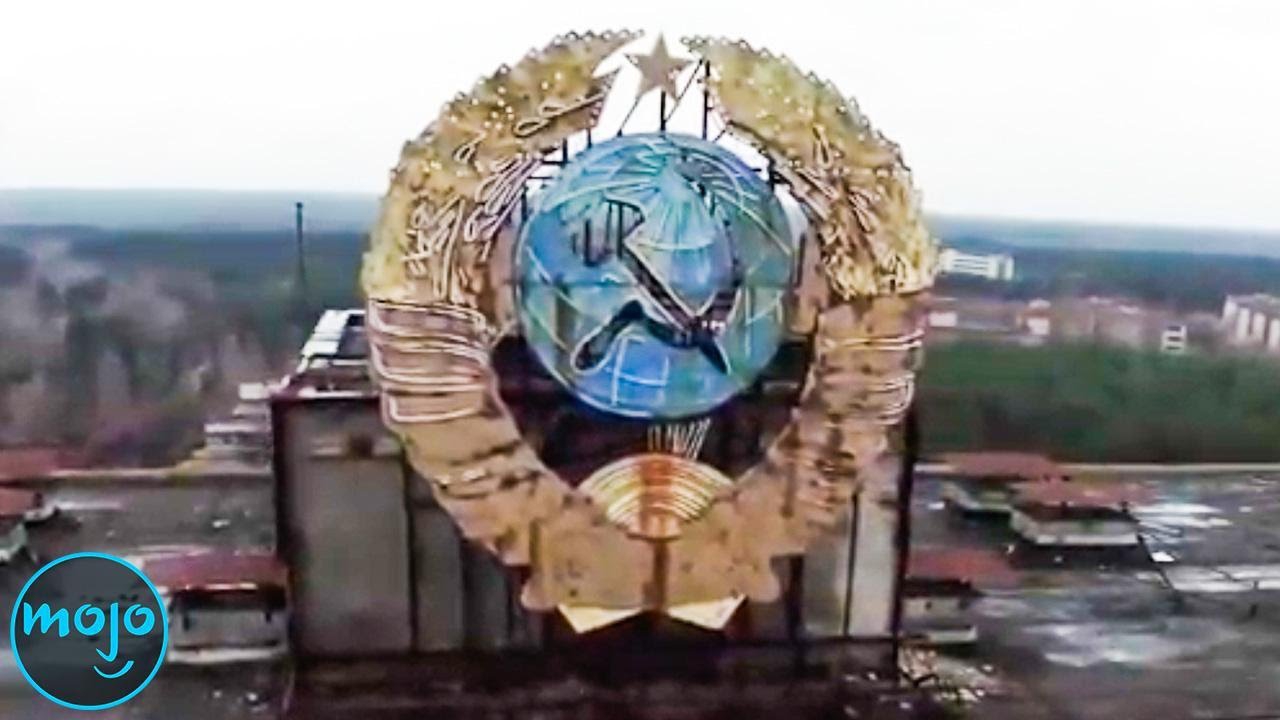

Top 10 Ruin Places In the World
UDEME ABBA@udemeabba089100
5 months ago
Top-10-Places-That-Dont-Exist-Anymore
Welcome to WatchMojo, and today we’re counting down our picks for locations on Earth that have been abandoned, significantly altered, or destroyed thanks to human activity, climate change, or natural occurrences.
10: Picher, Oklahoma
For half a century, the town of Picher, Oklahoma was one of the United States’ leading producers of lead and zinc. As a result of minimal oversight, the mining operations literally undermined the foundations of the town. Toxic piles of waste were left all over the area, some of which found its way into children’s sandboxes. In 1983, the EPA included Picher as part of its massive Tar Creek Superfund site. Federal and state efforts to mitigate the damage didn’t work. By 1994, one third of Picher's children had lead poisoning. A mandatory evacuation was put in effect, with a 2008 tornado accelerating the town’s demise. As of January 2011, only six homes and one business remained, the residents too stubborn to leave.
9: Tomb of Mausolus, Turkey (1494)
Over the centuries, each of the Seven Ancient Wonders of the World - with the notable exception of the Great Pyramid at Giza - were lost to the sands of time. One of the last to fall was the Mausoleum at Halicarnassus, or the Tomb of Mausolus. It was built around 350 B.C.E. in modern day Turkey. The great tomb stood for hundreds of years, surviving both the invasion of Alexander the Great and two separate pirate attacks. By 1404, thanks to a series of powerful earthquakes, only the base of the tomb remained. In 1494, an order of crusader knights used the stones of the tomb to fortify their castle walls.
8: Gilman, Colorado (1984)
Once a booming zinc and lead mining town, Gilman, Colorado is now the site of one of the worst ecological disasters in U.S. mining history. The mining operations poisoned the soil and groundwater with arsenic, cadmium, copper, lead, and zinc. The ecology of the nearby Eagle River was decimated and residents of Gilman were horribly exposed. In 1984, the EPA deemed the town uninhabitable and designated it a Superfund site. The town was completely evacuated and abandoned, and cleanup efforts began. Some progress has been made, as one section of the area was taken off the Superfund list in 2023. Gilman, however, was never repopulated and is now a ghost town.
7: Lighthouse of Alexandria, Egypt (1323)
King Ptolemy I commissioned the construction of the Great Lighthouse at Alexandria in the 3rd century B.C.E. and it was finished some years later by his son. Built out of limestone and granite, it had a furnace at the top to provide light to sailors at sea. The lighthouse stood for over a thousand years when it was damaged by a series of earthquakes. After a powerful quake in 956, the lighthouse was repaired in Muslim style, with a dome added to its peak. It would stand for a few hundred years until two more earthquakes sent the tower into the sea. Its remnants were discovered at the bottom of the Mediterranean in the 20th century.
6: Wittenoom, Australia (1966)
The U.S. isn’t the only nation that lost towns to mining disasters. The town of Wittenoom once sat 880 miles northeast of Perth, Australia. Today, it's the home to "largest contaminated site in the southern hemisphere.” Blue asbestos mining began in the area in the 1930s, culminating with the construction of a company mining town in 1947. Wittenoom was Australia’s sole source of blue asbestos, but by 1966, the mine stopped being profitable and was shut down. The asbestos-induced health problems remained. In 2006-2007, the town’s official status was stripped, and roads to contaminated areas were closed. The town began its official closure in 2013. By 2022, the town’s last two residents departed.
5: Aral Sea Between Kazakhstan & Uzbekistan
For most of recorded history, the Aral Sea was the fourth largest lake on earth. In the 1930s, the Soviets started diverting water from the Aral to irrigate cotton fields. Unfortunately, the irrigation projects weren’t always sound, with much of the water getting lost. By the 1960s, water diversion projects caused the lake to shrink. Its reduction absolutely devastated the local fishing economy, destroying many towns situated on its shores. By 2007, the sea was a tenth of its original size. Today, the former eastern basin is known as the Aralkum Desert. The region is terribly polluted, causing massive public health issues. Former Secretary General of the UN called the shrinking of the Aral "one of the planet's worst environmental disasters."
4: Centralia, Pennsylvania (1962)
Centralia Pennsylvania, once a sleepy coal town, now sits atop a perpetual conflagration. In 1962, as one story goes, an attempt to clean the town’s landfill led to an intentional blaze. The fire, unfortunately, spread to abandoned coal shafts beneath the town and have continued to burn for over sixty years. Even still, it took three decades for the town to fully evacuate. The state bought all the real estate in the area in 1992 using eminent domain statutes and it was all condemned. In 2013, seven residents remained. They were allowed to remain until their deaths, at which point the rights to their land would revert to the government. Today, Centralia is a ghost town seemingly perched above a fiery gateway to hell.
3: Nimrud, Iraq (2015)
Nimrud was an ancient Assyrian city in Upper Mesopotamia founded over three thousand years ago. Long after the fall of ancient Assyria, the ruins of the city stood. In the 1840s, archeologists began excavating the city, discovering statues, palaces, temples, and a great ziggurat. Unfortunately, the city sits in modern day Iraq, and in 2014, the Islamic State forces surrounded the ancient city. As part of their campaign to destroy any relics or historical artifacts deemed ‘un-Islamic’ or idolatrous, they blew up or bulldozed the entire area. The forces destroyed 90% of the excavated city, annihilating 3000 years of history in just a few months.
2: Fukushima, Japan (2011)
In 2011, Fukushima Prefecture in Japan was hit by a massive earthquake. Unfortunately, Fukushima was home to a nuclear power plant, which suffered tremendous damage during the earthquake. Several reactors melted down, causing the first level 7 nuclear disaster since Chernobyl, and one of the worst disasters to strike Japan since Nagasaki. The containment effort was frantic, and hundreds of thousands of residents were temporarily evacuated. A large exclusion zone was created in the area. In the dozen years after the disaster, parts of the evacuation order were lifted bit by bit. But many towns which have lifted evacuation are still struggling with decontamination.
1: Pripyat, Ukraine (1986)
Founded in 1970, Pripyat, Ukraine was a boomtown of almost 50,000 by the end of 1985. It had over a dozen schools, a mega-hospital campus, stores, cinemas, restaurants, even an amusement park. A year later, it was completely abandoned. Pripyat was the closest town to the number four reactor at the Chernobyl nuclear power plant, which suffered a horrific meltdown in 1986. The entire town was swiftly evacuated. It’s a piece of Soviet history frozen in time, literally. All the clocks are stopped at 11:55, the precise moment that the power was cut. Today, nature has reclaimed Pripyat, with deer, elk, moose, boar and others returned to the area.
Source Wikipedia
photo credit: Google
#neighbors
#VisitAfrica
#DiscoverAfrica


5 months ago

5 months ago
